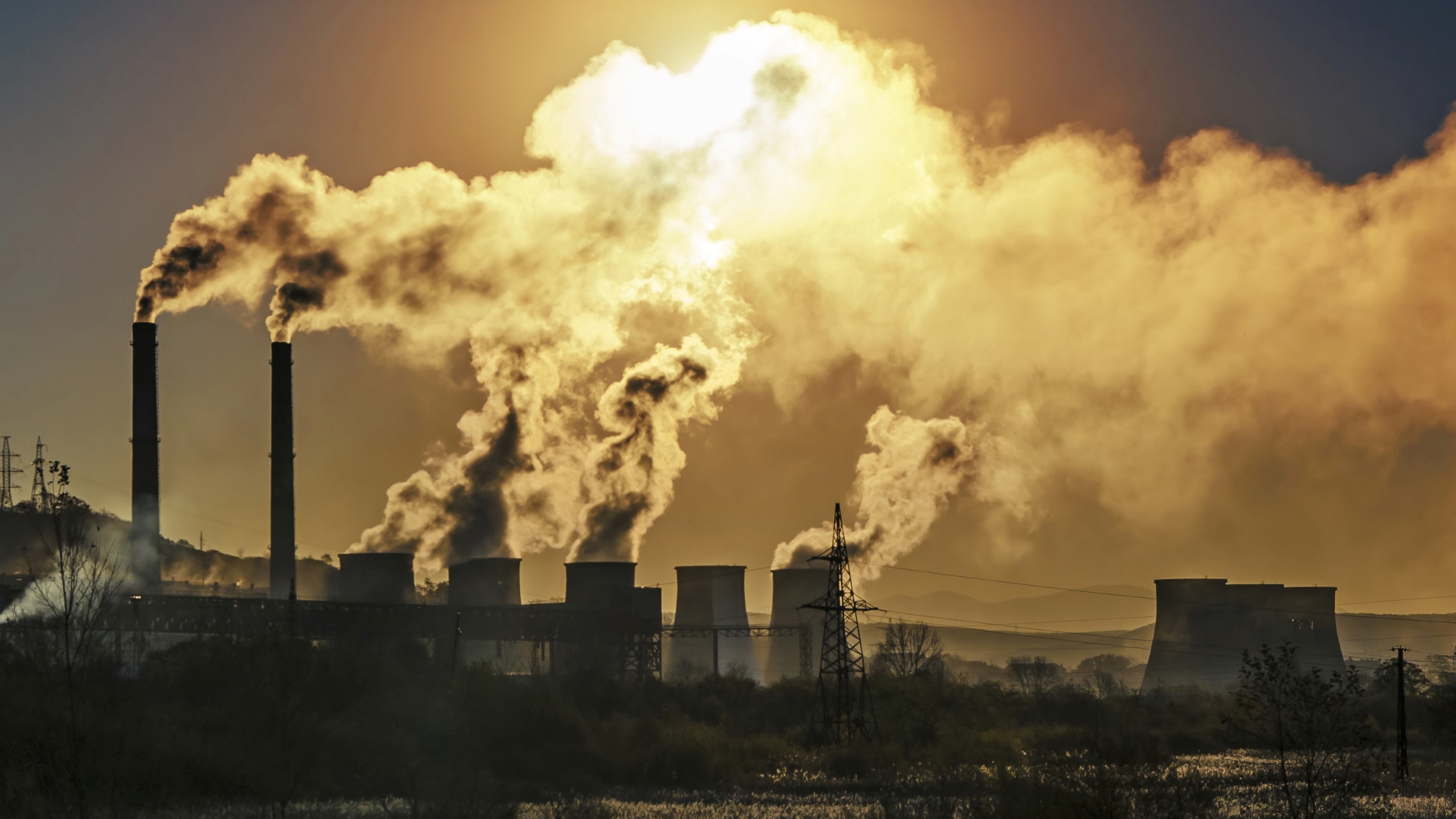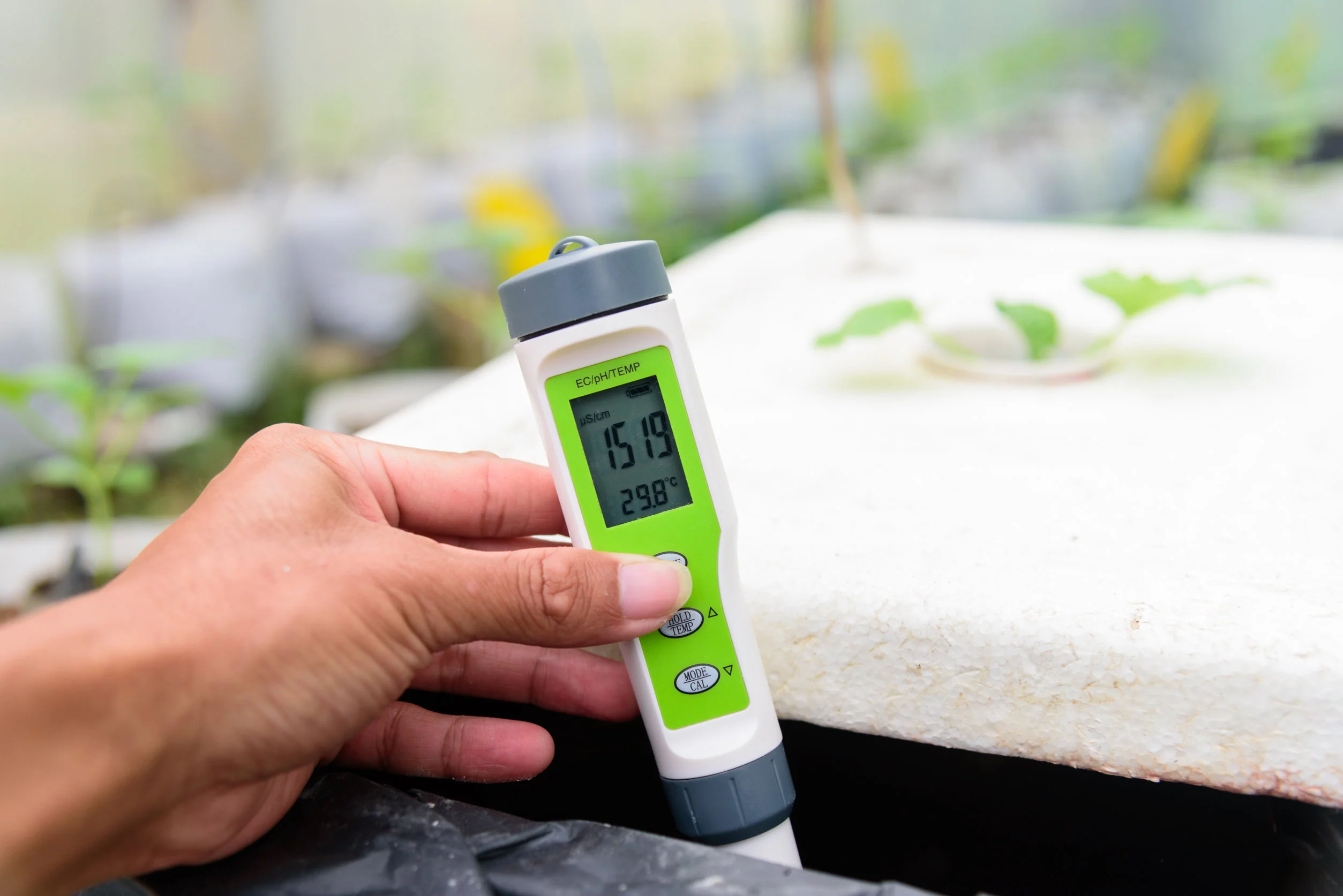Home>Gardening News and Trends>What Property Of Greenhouse Gases Makes Them Important To Earth’s Temperatures?


Gardening News and Trends
What Property Of Greenhouse Gases Makes Them Important To Earth’s Temperatures?
Modified: January 22, 2024
Discover why greenhouse gases play a vital role in regulating Earth's temperatures. Stay updated with the latest news on their significance and impact.
(Many of the links in this article redirect to a specific reviewed product. Your purchase of these products through affiliate links helps to generate commission for Chicagolandgardening.com, at no extra cost. Learn more)
Table of Contents
Introduction
Welcome to the fascinating world of greenhouse gases and their impact on Earth’s temperatures. Understanding the role of greenhouse gases is vital in comprehending the complex dynamics of our planet’s climate system. From rising global temperatures to extreme weather events, the effects of greenhouse gases are becoming increasingly evident and concerning.
Greenhouse gases refer to gases in the Earth’s atmosphere that have the ability to trap heat and contribute to the greenhouse effect. The greenhouse effect is a natural process that plays a crucial role in maintaining Earth’s temperature and making it suitable for life as we know it.
Over the past century, human activities, such as burning fossil fuels and deforestation, have significantly increased the concentration of greenhouse gases in the atmosphere. This has led to an imbalance in the natural greenhouse effect, resulting in accelerated global warming and climate change.
In this article, we will explore the physical properties of greenhouse gases and the mechanisms by which they influence Earth’s temperatures. We will delve into the specific characteristics of these gases and understand why they are so important for the overall temperature regulation of our planet.
By the end of this article, you will have a deeper understanding of the significance of greenhouse gases and their role in shaping Earth’s climate. So, let’s dive in and unravel the mysteries of greenhouse gases and their impact on our planet’s temperatures.
Greenhouse Gases and Their Role in Earth’s Temperatures
Atmospheric gases play a vital role in regulating Earth’s temperatures by allowing the Sun’s rays to enter the atmosphere while preventing some of the heat from escaping back into space. These gases, known as greenhouse gases, act as a natural blanket, maintaining the overall temperature of the planet within a habitable range.
The major greenhouse gases include carbon dioxide (CO2), methane (CH4), nitrous oxide (N2O), and water vapor (H2O). While water vapor is the most abundant greenhouse gas, its concentration is mainly controlled by temperature and weather patterns. On the other hand, carbon dioxide, methane, and nitrous oxide, released primarily through human activities, have been responsible for the acceleration of global warming in recent decades.
When sunlight reaches the Earth, a portion of it is reflected back into space, while the rest is absorbed and transformed into heat. Greenhouse gases in the atmosphere trap the heat, preventing it from escaping back into space. This process, known as the greenhouse effect, is crucial for maintaining Earth’s average temperature at around 15 degrees Celsius (59 degrees Fahrenheit).
However, the rapid increase in greenhouse gas emissions from human activities has resulted in intensified heat retention. This enhanced greenhouse effect has caused Earth’s temperatures to rise, leading to climate change and its associated impacts, such as melting glaciers, rising sea levels, and extreme weather events.
It is important to note that not all gases have the same ability to trap heat. This is due to variations in their molecular structure and composition. For example, carbon dioxide, although present in relatively small amounts, has a long atmospheric lifetime and can stay in the atmosphere for centuries, contributing to the long-term warming trend.
Methane, on the other hand, has a stronger heat-trapping capability than carbon dioxide but has a shorter lifespan in the atmosphere. It is primarily emitted from agricultural and livestock activities, as well as from the extraction and burning of fossil fuels.
Nitrous oxide has a potency almost 300 times higher than carbon dioxide and can persist in the atmosphere for over a century. It is predominantly released from agricultural and industrial activities, as well as from the burning of fossil fuels and biomass.
Understanding the role of greenhouse gases in Earth’s temperatures is crucial for developing strategies to mitigate climate change. By reducing greenhouse gas emissions and transitioning to renewable energy sources, we can work towards stabilizing Earth’s climate and safeguarding the future of our planet and its inhabitants.
The Physical Properties of Greenhouse Gases
To comprehend the role of greenhouse gases in Earth’s temperatures, it is essential to understand their physical properties and how they interact with sunlight and heat. The physical properties of greenhouse gases determine their ability to trap heat and contribute to the greenhouse effect.
1. Carbon Dioxide (CO2): Carbon dioxide is a colorless and odorless gas that naturally occurs in the Earth’s atmosphere. It is released through natural processes, such as volcanic eruptions and the respiration of living organisms. However, human activities, primarily the burning of fossil fuels and deforestation, have significantly increased its concentration in recent decades. Carbon dioxide molecules are relatively large and have multiple bonds, enabling them to absorb and re-emit infrared radiation, thus functioning as an effective greenhouse gas.
2. Methane (CH4): Methane is a colorless and flammable gas that is commonly associated with the decomposition of organic matter. It is also released in large quantities during the production and transportation of coal, oil, and natural gas. Methane molecules are smaller than carbon dioxide molecules, but they have a higher ability to absorb infrared radiation. This makes methane a potent greenhouse gas, contributing to the acceleration of global warming.
3. Nitrous Oxide (N2O): Nitrous oxide, also known as laughing gas, is a colorless and sweet-smelling gas. It is primarily a byproduct of agricultural and industrial activities, including the use of synthetic fertilizers and the combustion of fossil fuels. Nitrous oxide has a higher heat-trapping capability than carbon dioxide and methane, making it another significant contributor to the greenhouse effect.
4. Water Vapor (H2O): Water vapor is the most abundant greenhouse gas in the Earth’s atmosphere. It plays a crucial role in the natural greenhouse effect since it can absorb and re-emit large amounts of infrared radiation. However, water vapor concentration in the atmosphere varies greatly due to regional and seasonal variations in temperature and humidity. Its role as a greenhouse gas is closely linked to temperature changes and weather patterns.
It is important to note that the impact of greenhouse gases on Earth’s temperatures is not solely determined by their physical properties. Factors such as their concentration in the atmosphere, duration of presence, and interactions with other components of the climate system also influence their overall effect.
Understanding the physical properties of greenhouse gases helps scientists and policymakers develop strategies to mitigate the impacts of climate change. By studying their behavior and interactions within the atmosphere, researchers can better predict how changes in greenhouse gas concentrations will affect Earth’s climate in the future.
Greenhouse Effect and Global Warming
The greenhouse effect is a natural phenomenon that is essential for sustaining life on Earth. It refers to the process by which certain gases in the atmosphere trap heat from the Sun, preventing it from escaping back into space. This trapped heat, in turn, warms the planet’s surface and lower atmosphere, creating a stable and habitable temperature range for life to thrive.
However, human activities, particularly the burning of fossil fuels and deforestation, have significantly increased the concentration of greenhouse gases in the atmosphere. The excessive release of carbon dioxide, methane, and other greenhouse gases has led to an enhanced greenhouse effect, resulting in a phenomenon known as global warming.
Global warming refers to the long-term trend of rising average temperatures on Earth’s surface and lower atmosphere. It is primarily attributed to the increased concentrations of greenhouse gases, trapping more heat and disrupting the natural balance of the climate system.
As the Earth’s temperature rises due to global warming, it triggers a cascade of environmental changes. Melting ice caps and glaciers contribute to rising sea levels, posing risks to coastal communities and ecosystems. Warmer temperatures also impact weather patterns, leading to more frequent and severe extreme weather events such as hurricanes, heatwaves, and heavy rainfall.
Global warming can have significant consequences on ecosystems, biodiversity, and human societies. It can disrupt natural habitat ranges, leading to species displacement or extinction. Changes in temperature and precipitation patterns can affect agricultural productivity, water resources, and food security. Additionally, global warming can exacerbate existing social and economic inequalities, as vulnerable communities face disproportionate impacts from climate change.
Addressing global warming requires concerted efforts to reduce greenhouse gas emissions, transition to renewable energy sources, and adopt sustainable practices. The international community has recognized the urgency of this issue and has come together through initiatives such as the Paris Agreement to limit global warming and mitigate its consequences.
By understanding the greenhouse effect and its relationship with global warming, we can take proactive steps towards mitigating climate change and building a sustainable future for generations to come.
Specific Characteristics of Greenhouse Gases
Greenhouse gases, including carbon dioxide (CO2), methane (CH4), nitrous oxide (N2O), and water vapor (H2O), each possess unique characteristics that contribute to their role in the greenhouse effect and their impact on Earth’s temperatures.
1. Carbon Dioxide (CO2): Carbon dioxide is primarily released through human activities such as the burning of fossil fuels and deforestation. It has a long atmospheric lifetime, which means it can persist in the atmosphere for many years. This characteristic allows carbon dioxide to accumulate and contribute to the long-term warming trend. Additionally, carbon dioxide is well-mixed in the atmosphere, spreading its impact globally.
2. Methane (CH4): Methane is produced by natural processes, such as the decay of organic matter, as well as human activities such as agriculture, livestock farming, and the extraction and burning of fossil fuels. It has a relatively short atmospheric lifetime compared to carbon dioxide, but its heat-trapping capability is significantly higher. Methane has a potent warming effect, making it a critical greenhouse gas to address in the efforts to mitigate climate change.
3. Nitrous Oxide (N2O): Nitrous oxide is primarily emitted from agricultural practices, industrial activities, and the burning of fossil fuels. It is a long-lived greenhouse gas that can persist in the atmosphere for over a century. Nitrous oxide has a global warming potential nearly 300 times greater than carbon dioxide, making it a significant contributor to the overall greenhouse effect.
4. Water Vapor (H2O): While water vapor is not directly emitted by human activities, its concentration in the atmosphere increases with higher temperatures. Water vapor is the most abundant greenhouse gas, and its presence influences the overall greenhouse effect. As temperatures rise, more water vapor enters the atmosphere, further amplifying the warming effect. Water vapor plays a crucial role in the climate system but is governed by weather patterns and regional variations.
These specific characteristics of greenhouse gases demonstrate the diverse ways in which they interact with sunlight and heat, contributing to Earth’s temperature regulation. Understanding the unique properties of each greenhouse gas is essential to developing effective strategies to mitigate their emissions and lessen their impact on global warming and climate change.
The Importance of Greenhouse Gases for Earth’s Temperatures
Greenhouse gases play a crucial role in maintaining Earth’s temperatures within a habitable range. Without these gases, our planet would be much colder, making it uninhabitable for most forms of life. Understanding the importance of greenhouse gases and their impact on Earth’s temperatures is essential for comprehending the delicate balance of our climate system.
Firstly, greenhouse gases act as a natural blanket, allowing sunlight to enter the Earth’s atmosphere while preventing some of the heat from escaping back into space. This process, known as the greenhouse effect, is vital for creating a suitable temperature for life to thrive. Without these gases, the surface of Earth would be approximately 33 degrees Celsius (59 degrees Fahrenheit) cooler, rendering it inhospitable for most living organisms.
Secondly, greenhouse gases help regulate the Earth’s energy balance. By trapping heat, these gases prevent excessive cooling during the night, maintaining a more stable temperature throughout the day and night cycle. This stability in temperature is essential for the survival and growth of plants and animals, as it allows for a consistent and predictable environment.
Moreover, greenhouse gases, particularly water vapor, play a critical role in regulating water cycles and precipitation patterns. As temperatures rise, more water vapor enters the atmosphere, leading to increased evaporation and the formation of clouds. These clouds, in turn, reflect sunlight back into space, providing a cooling effect. Without greenhouse gases, water vapor levels would be significantly lower, causing less cloud formation and altering local and regional climate patterns.
While greenhouse gases occur naturally in the Earth’s atmosphere, human activities have dramatically increased their concentrations over the past century. The burning of fossil fuels, deforestation, and other industrial processes have released vast amounts of carbon dioxide, methane, nitrous oxide, and other greenhouse gases into the atmosphere. This enhanced greenhouse effect is leading to a rapid increase in global temperatures, resulting in climate change and its associated impacts.
Addressing the impact of greenhouse gases on Earth’s temperatures requires a collective effort. Mitigating climate change involves reducing greenhouse gas emissions, transitioning to renewable energy sources, promoting sustainable practices, and adapting to the changes already underway. By understanding and respecting the importance of greenhouse gases, we can work towards a more sustainable and resilient future for our planet and future generations.
Conclusion
The role of greenhouse gases in Earth’s temperatures is undeniably significant. Their ability to trap heat and regulate the greenhouse effect is essential for maintaining a habitable environment on our planet. Without greenhouse gases, Earth would be a frozen and lifeless world.
However, the increasing concentrations of greenhouse gases, caused primarily by human activities, have disrupted the natural balance of the climate system. Global warming, driven by the enhanced greenhouse effect, has led to a myriad of environmental changes, including rising temperatures, melting ice caps, sea-level rise, and extreme weather events.
Understanding the physical properties and specific characteristics of greenhouse gases allows us to comprehend their unique roles and contributions to Earth’s temperatures. Carbon dioxide, methane, nitrous oxide, and water vapor each play a crucial part in the overall temperature regulation of our planet.
Addressing the challenges posed by greenhouse gases and climate change requires a collaborative and proactive approach. By reducing greenhouse gas emissions, transitioning to renewable energy sources, and implementing sustainable practices, we can mitigate the impacts of global warming and work towards a more sustainable future.
Continued research, innovation, and global cooperation are key to finding effective solutions to combat climate change. By raising awareness and empowering individuals, communities, and governments to take action, we can collectively build a more resilient and sustainable world for future generations.
Let us acknowledge the significance of greenhouse gases for Earth’s temperatures and commit ourselves to taking meaningful steps towards a greener, more sustainable future.






